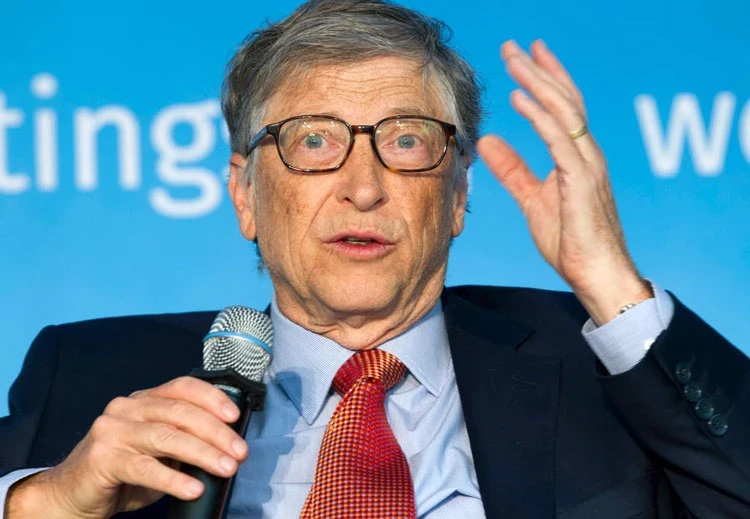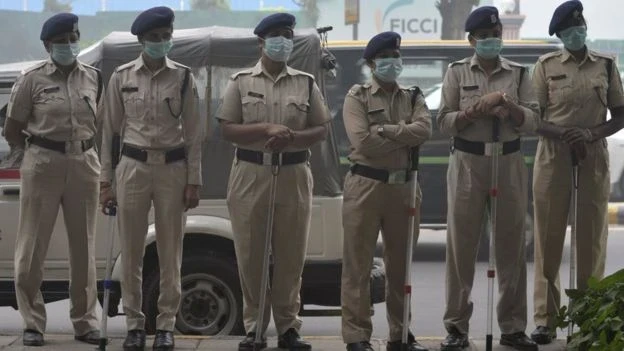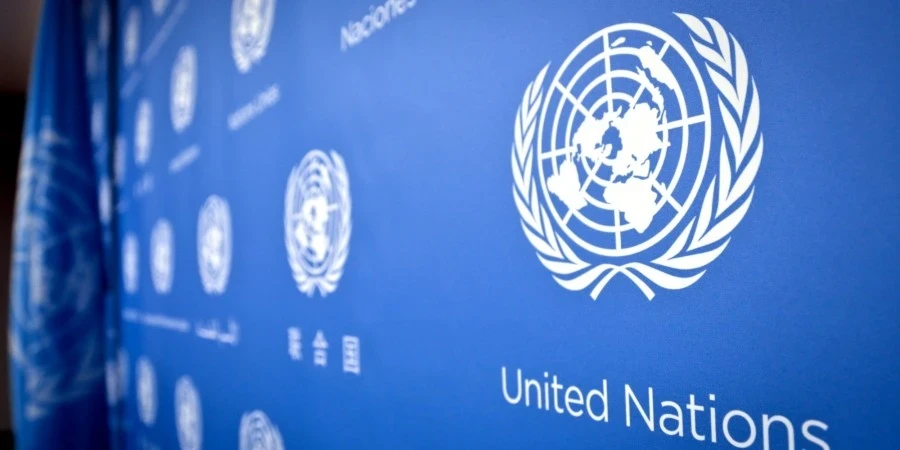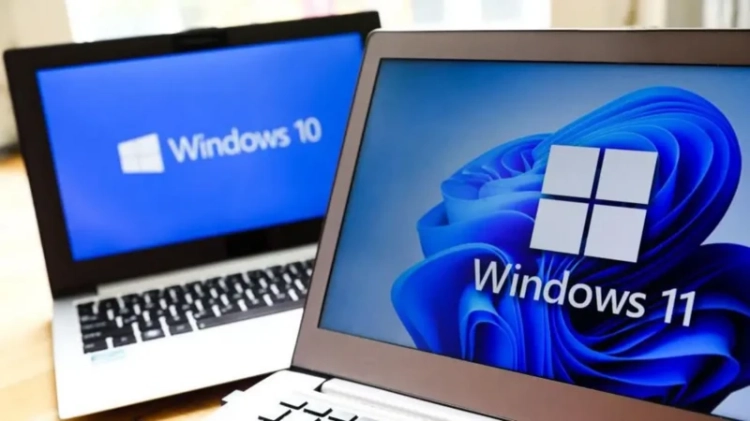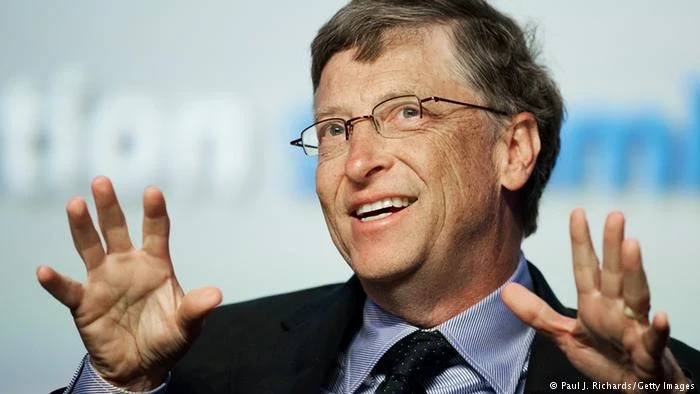
Bill Gates believes that innovative ideas are the most effective means in the fight against climate change. To realize his intentions, he invests billions in nuclear technologies, reducing methane emissions from cows, and vacuum window units. Sustainable development expert Anastasia Laukkanen examined how one of the richest people in the world chose climate issues as the main focus of his philanthropy, and why experts doubt the effectiveness of his efforts:
At the age of 17, Bill Gates achieved an outstanding result on the SAT (analogous to the Unified State Exam in the USA), after which he enrolled at Harvard. At university, he demonstrated talent in solving practical problems. For example, he was asked to address a situation where a chef was making uneven pancakes, and the restaurant owner wanted them arranged so that the largest was at the bottom and the smallest at the top. Gates found the optimal solution, which became the basis of his scientific work (Bounds for sorting by prefix reversal).
However, after studying for less than two years, in 1975 Gates took a leave of absence to found Microsoft and carve out his niche in the emerging personal computer market. Later, he admitted that he was afraid of missing the technological revolution.
Currently, the billionaire ranks 14th on Forbes' list of the richest people. He led Microsoft until 2000, after which he focused on global initiatives in health and education. In collaboration with his ex-wife, they established the Bill & Melinda Gates Foundation. Since its inception, the foundation has allocated over $8 billion to medical programs, vaccination, and poverty alleviation, according to information on the organization's website.
Weather for Dummies
After ten years of charitable work in African countries, Gates realized that the problem lies not only in the lack of healthcare technologies but also in climate change.
The billionaire recalls that he used to hear a lot about greenhouse gases and the threat of global warming but did not delve into the topic. However, one day he sought clarification from renowned climatologists Ken Caldeira and Ken Kitt. They explained to Gates that climate changes are becoming increasingly serious, and their main cause is the emissions of greenhouse gases from burning fossil fuels, especially in African countries, where water and energy are already scarce.
In addition to discussions with scientists, Gates listened to lectures on climate by Professor Richard Wolfson and read the book "Weather for Dummies" by John Cox.
“When I first started my work, my main priority was global health — it is the most serious inequality issue in the world, and it is solvable. But as the catastrophic consequences of climate change became more evident, I realized that it is impossible to improve the lives of the poorest without addressing climate change,” Gates wrote.
He also noted that the assertion of a lack of funds to combat poverty and protect the climate is erroneous: the right technologies and mechanisms for their implementation can work wonders.
For example, accessible electricity could provide access to water, enable the operation of electrical appliances, and ensure lighting in homes and public institutions. “If you ask what can reduce poverty, undoubtedly, the answer will be one — the price of electricity,” Gates said at TED in 2010.
However, traditional energy sources, such as coal and internal combustion engines, only exacerbate the climate problem, as their use is associated with CO2 emissions. Therefore, Gates decided to focus on clean energy.
Money and Presidents
Five years after his TED talk, in July 2015, Bill Gates announced a $2 billion investment in energy innovations. That same year, he founded the Breakthrough Energy initiative, which brings together several organizations and funds to promote decarbonization ideas. Initially, Gates focused on political initiatives, lobbying for favorable conditions for the implementation of green technologies. In 2015, U.S. President Barack Obama, French President François Hollande, and Indian Prime Minister Narendra Modi joined Gates at international climate negotiations in Paris.
“Innovations in clean energy are moving from laboratories to the market,” Gates commented on the creation of a coalition of climate investors after his debates with world leaders.
In 2016, Gates launched the flagship venture fund Breakthrough Energy Ventures (BEV) with an initial capital of $1 billion, aimed at investing in startups capable of reducing greenhouse gas emissions by at least half a gigaton of CO2 per year — that’s 1% of all annual emissions from humanity, comparable to the emissions of the entire civil aviation sector.
On December 12, 2017, new French President Emmanuel Macron gathered 15 of the world's largest philanthropists at the Élysée Palace to discuss the climate agenda. Among the participants were Michael Bloomberg, Bill Gates, and Richard Branson. In a photo by the walls of the president's residence, Gates stands in profile, next to him Branson is smiling, and Michael Bloomberg is looking at the camera with his hands in his pockets.
Gates outlined his views on saving the planet in his book "How to Avoid a Climate Disaster: The Solutions We Have and the Breakthroughs We Need," published in 2021. In it, he proposes a technological approach to solving the climate crisis, similar to the pancake problem, where greenhouse gases became the same pancakes. Gates is confident that by 2050, the world must achieve a balance between gas emissions and their absorption (net zero), which is only possible through the implementation of climate innovations in energy and industry.
In Pursuit of Revolutions
Initially, Bill Gates invested in scientific research and development and supported startups offering innovative solutions, such as small nuclear reactors and CO2 capture technologies.
He believed that only scientific breakthroughs could help tackle the climate crisis. During this period, the billionaire actively advocated for increased public and private investment in R&D and the creation of venture funds.
Over time, Gates' approach changed: he moved away from unique "moonshot missions" and shifted to systemic changes in industrial sectors. BEV began investing in scaling existing solutions, such as solar energy, batteries, and infrastructure for electric vehicles, as well as decarbonization projects in heavy industry (green steel and low-carbon cement).
In recent years, Gates and his team have entered the "implementation era." The focus has now shifted to integrating climate technologies into the economy. Currently, BEV invests in five key areas. Support is provided to companies that reduce emissions in industry, as well as to startups in clean energy, agriculture, transportation, and building technology. The fund's portfolio contains 123 startups, which received $125 million in investments in 2025.
The billionaire actively collaborates with other investors. For example, Siemens plans to make all 1,300 buildings it owns climate-neutral by 2030. “One way to achieve this goal is through new vacuum-insulated windows developed by LuxWall,” Gates notes. The thickness of LuxWall glass is one-third that of a regular double-glazed unit, and it is 500% more energy-efficient. Such windows could reduce global CO2 emissions by 3%.
American Airlines, in turn, is developing low-carbon aviation fuel (SAF) in collaboration with Gates' fund. “The company is doing this because it fears missing out on a revolution in the industry,” he believes, recalling his fears when he founded Microsoft.
Gates is also keeping an eye on advancements in low-carbon protein. In 2023, Breakthrough Energy invested in an Australian startup that is developing feed additives for cows to reduce their methane emissions. He also highlights the Chinese company Envision Energy, which is engaged in the development of wind turbines and green hydrogen systems.
Among other notable projects of the fund is Commonwealth Fusion Systems, which created the first high-temperature superconducting magnet necessary for commercial nuclear fusion. This company plans to launch a demonstration reactor, SPARC, by the end of 2025. QuantumScape is developing solid-state batteries that provide electric vehicles with a range of up to 800 km and can charge in less than 15 minutes. The biotechnology company
Pivot Bio replaces synthetic nitrogen fertilizers with microbial cultures, which has already contributed to a 30% reduction in nitrous oxide emissions on farms in the U.S.
The fund acknowledges that much of its portfolio consists of complex technologies with long research cycles and difficulties in scaling. In 2025, Gates' fund opened offices in Singapore and the Netherlands and began to scrutinize the economics of its solutions more rigorously. However, areas such as green hydrogen production still face challenges in achieving commercial success.
Gates' Economics
According to the billionaire, the main economic incentive for implementing green technologies is reducing the Green Premium, or "environmental premium." The Green premium is the price difference between a traditional product that causes emissions and its clean counterpart. For example, steel produced without coal costs 30-40% more than regular steel, while sustainable aviation fuel is five times more expensive than standard fuel.
Gates views this term as a tool for assessing economic barriers to decarbonization: the higher the premium in a sector, such as aviation or construction, the more innovation, investment, and political measures are needed to reduce the cost of clean technologies. This approach allows for focusing efforts where the price difference is most significant.
Ultimately, Gates believes that the "environmental premium" must be reduced to zero for green technologies to become the norm rather than an expensive exception, he is convinced.
However, Canadian journalist, writer, and activist Naomi Klein warns: one should not trust "climate innovations from wealthy sponsors like Bill Gates." Billionaires publicly support emission reductions but continue to operate their businesses as usual. In 2025, an investigation by Jacobin magazine confirmed her words, showing that Gates' investment funds hold shares in oil companies — BP, Chevron, and Occidental Petroleum.
Moreover, the billionaire (which has become one of his most frequent criticisms) continues to use a fleet of six private jets. To such accusations, he once responded: “I buy certified aviation fuel from Climeworks to offset carbon emissions, and I spend billions on climate innovations. I am not part of the problem.”
Gates uses this term as a tool for quantitatively assessing economic barriers to decarbonization: the higher the premium in any sector, such as aviation, steel production, or construction, the more innovation, investment, and political measures are needed to lower the cost of clean technologies. This approach allows for efforts to be directed where the price gap is the largest.
Ultimately, the "environmental premium" needs to be reduced to zero for green technologies to become the standard rather than an expensive exception, Gates believes.
However, Canadian journalist, writer, and public figure Naomi Klein warns: one should not trust "climate innovations from wealthy sponsors like Bill Gates." Billionaires publicly support emission reductions but continue to operate their businesses as usual. Her point was somewhat confirmed by an investigation by Jacobin magazine in 2025. It showed that Gates' investment funds own shares in oil giants — BP, Chevron, and Occidental Petroleum.
The billionaire himself (and this is one of the most frequent accusations) continues to use a fleet of six private jets. To such claims, he once responded: “I buy the gold standard of aviation climate fuel from Climeworks to offset carbon, and I spend billions on climate innovations. I am not part of the problem.”

